- Home
- Scott Westerfeld
Bogus to Bubbly Page 2
Bogus to Bubbly Read online
Page 2
BELLY SENSOR
If you normally wear a belly ring, you may wish to consider clipping on a belly sensor while you ride. Your board’s guidance-and-control system will track the exact position of your belly sensor, which tells it where your center of gravity is at any moment. Combined with other data—the shifting of your weight on the board, the position of your crash bracelets, and your verbal commands—your center of gravity helps the board sense how you are standing and where you want to go next.
LONG-RANGE HOVERBOARD
Once you have mastered riding inside city limits, you may want to take a hoverboard on your next camping trip. But boards designed for the city are very dangerous when used off the grid. Consider requisitioning a long-range hoverboard with the following features:
Extra-strength lifters to use natural sources of metal to push against, such as those found in streams and rivers.
Extendable solar panels to recharge without city power points.
Metal-detector lights to continuously inform the rider of the amount of ferrous metal in the terrain.
MAPS
Geography is very important in the Uglies series. Take Tally’s city, where the neighborhoods are laid out to reflect the culture’s ideology. Uglies and pretties are divided not just by culture and tradition, but by the river and the greenbelt. Everyone knows his or her place!
Outside this ordered existence is the wild, a messy place that shows the scars of history. It’s dotted with leftovers of the Crash: ruins, ecological disasters, and warring pre-Rusty reservations. And yet in their journeys across the wild, Tally and her friends also run into hopeful symbols of the future, such as Diego and the Smoke.
So this guide wouldn’t be complete without a few maps. Here are “the city” (that’s right, I never gave it a name) and some of the North American continent (partly flooded by global warming, you’ll notice). I hope they help to orient you in Tally’s world.
TALLY’S CITY
A RUINED CONTINENT
THE HISTORY OF TALLY’S WORLD
A question I’m often asked is: “Are we the Rusties?”
The short answer is: “Yes!” But, of course, what I really mean is that we could be the Rusties. We don’t have to wind up with a future like Tally’s. We have a choice. That’s why history is written after it happens, not before—because no one knows how things will turn out.
But if we do manage to take the same path as the Rusties in Tally’s world, here’s how all the history books three hundred years from now will start, by explaining how the people of today messed everything up. . . .
HISTORY #1:
THE RUSTY CRASH
What if there had been millions of Smokies? Billions of them, soon enough? Outside of our self-contained cities, humanity is a disease, a cancer on the body of the world.
—DR. CABLE
The Rusties were strange in a lot of ways, but perhaps the hardest thing to comprehend is how many there were: billions.
Yes, that’s billions with a b!
That made them hard to count, so nobody knows exactly how many Rusties were alive during the Crash. But at some point before the end, Earth’s population certainly reached 10 billion. That’s about two hundred people for every square mile of land, which didn’t leave a lot of room for prairies, tundra, deserts, or rain forests. More than half of Earth’s land surface was taken over by human beings and the network of farms, mines, oil fields, and factories that supported them.
But it wasn’t just the Rusties’ numbers that were planet-wrecking, it was their appetites. They burned so much energy that at night their city lights could be seen from space. (No, we’re not kidding.) And they loved to buy stuff—cars, electronics, unrecyclable clothes. In wealthy countries, the average Rusty produced two kilograms of garbage every single day. Multiply that amount by a few billion, and you get the picture.
To manufacture all this stuff, the Rusties gouged the earth and poisoned the sky. Their hunger wreaked havoc in the climate and in the codes of life itself. Under this constant assault, the wild began to die. At the Rusties’ height, a hundred species became extinct every day.
They did a pretty good job on themselves too. Their political leaders were always looking for ways to kill one another, and their economic systems were built on poverty and debt. And so finally, one day, they got too good at destroying themselves.
No one knows who created the oil bug. Maybe it was a well-meaning Rusty scientist trying to solve the problem of oil spills. Or maybe it was a terrorist trying to bring down the established order. It may even have been a natural product of evolution, life itself striking back.
But however the oil bug appeared, there’s no denying that these tiny bacteria changed the world. Like mold consuming bread, they raced through any oil they came in contact with, changing its chemical structure. Overnight the gas in a Rusty car would become unstable, exploding on contact with the air. Suddenly every car was a bomb, every oil field a firestorm.
And as the oil burned, it carried the spores of the bug into the air. Soon the oil bug had spread across the entire world.
So why didn’t people just change their ways when the bug was first discovered? Why did so many of them have to die?
Because the Rusties were hugely dependent on oil. They used 100 million barrels every day—to make plastic, to fertilize crops, to build roads, and to generate electricity. Even their clothing was made from oil-based products, along with their perfume, lipstick, nail polish . . . you name it.
With their cars aflame, they had no way to escape their giant cities. To make things worse, the planet was too broken to help the survivors—the rivers were dirty, the land wouldn’t grow food. And, being Rusties, the people fought over everything that was left, compounding starvation with bloodshed. In that first decade, 98 percent of humanity died.
Of course, a few people survived. . . .
HISTORY #2:
THE RISE OF THE CITIES AND THE PRETTY COMMITTEE
Or maybe when they do the operation—when they grind and stretch your bones to the right shape, peel off your face and rub all your skin away, and stick in plastic cheekbones so you look like everybody else—maybe after going through all that you just aren’t very interesting anymore.
—SHAY
After the Rusty Crash were long years of hardship and warfare. None of the old nation states survived. Even cities and towns fell to pieces, dependent as they were on a system that had failed. But here and there, small groups of people managed to stick together and survive. They were a mixed bunch, and most were outside the mainstream.
Some were people who’d already rejected the Rusty system and had lived in the wilderness for a long time, more or less expecting civilization to fail. Some were villagers in the rain forests or deserts, who’d never been a part of the world that was falling apart. Some were scientists whose technical skills helped them navigate the challenges of the Crash, or remainders of the Rusties’ vast armies, who were organized and better equipped to survive.
At first these groups were widely separated. The Crash had carved the world into pieces, centered around a few livable areas, with dead zones in between. Bioengineered species had swept across the ruined farms, making huge spaces uninhabitable. Even with the Rusties’ factories and strip mines fallen silent, the wild was slow to recover. Too much damage had been done.
So when civilization did arise again, it was in small cities in a few safe areas, with vast spaces between them. These cities were also separated by differences in culture and background, some cities highly technical, some rustic, almost pre-Rusty. Some survivors blamed mysterious enemies or vengeful gods for the Crash, and some put the blame on Rusty civilization itself. Many of the cities, ironically, were settled just outside the Rusty Ruins.
But as they began to reach out across the wild and make contact with one another, the survivors discovered that they all shared a common conviction: The planet must not be wrecked again.
Gradually the cities establ
ished limited contact and began to trade and share technology. With oil gone they focused on renewable resources: solar and wind power. Superconductors made hover technology possible but limited travel to within cities, where magnetic grids could be constructed. No one was anxious to rebuild the highway systems of the Rusties.
Overall, it was a time of peace and cooperation. Earth’s population was so small that there was little competition for territory. And after everything that had happened during the Crash, war just didn’t seem like a great idea.
But there were still conflicts, because people still had different faiths and cultures, and still viewed one another with suspicion. Some people worried that one day the cities would grow strong enough to fight one another. And no one knew if old Rusty weapons still existed, waiting for someone to stumble upon them and use them again. Maybe next time the planet wouldn’t recover.
So, about a century after the Crash, a group of scientists from every city convened to study the problem of human conflict. They studied the few pre-Rusty tribes outside the cities, who still fought one another in endless, bloody feuds. They plumbed old Rusty psychology texts, trying to find a means of eliminating war forever.
Then one day a researcher rediscovered an old theory called the “halo effect.” Rusty science had shown that beautiful people were treated better than their peers, got into less trouble, and were more happy and successful. Perhaps if everyone were beautiful, the world would be a better and more peaceful place.
Over many years a surgical procedure was developed to turn young people into so-called pretties. Their faces would call on the basic evolutionary instincts of cooperation and courtship in everyone who looked at them. Cultural differences, personal hatred—nothing could stand against the power of a pretty face.
Of course, these first “pretties” weren’t nearly as beautiful as pretties of later generations. But they were the prototype that started generations of experimentation and development, ushering in the beginning of the Prettytime, an era of peace and stability.
Of course, this was only the official story.
What scientists really discovered was that pretties did fight with one another. No matter how beautiful they were, human beings still competed, still rebelled, and still sometimes hated one another. Maybe things were a little easier among the pretties, but something else had to be done if war were to be prevented forever.
Something far more drastic.
Fortunately for those in charge, everyone was dying to have the pretty surgery—who wouldn’t want to be gorgeous, after all? If another answer could be found in the operating tank, maybe humanity could still be saved from itself.
That answer was, of course, bubblehead surgery.
With small alterations to several areas of the brain, a new kind of pretty could be created: compliant, unaggressive, and happy, the perfect combination of sweet-tempered and just a bit lazy. Impossible to make into soldiers, bubbleheads could never go to war. Incapable of dealing with more than one child every few decades, they certainly wouldn’t re-create Rusty overpopulation anytime soon. And they were unlikely to ever want to change the system that had made them so beautiful and so happy. Finally humanity could be kept in an idyllic state forever—the end of hardship and conflict had been reached at last.
Of course, the Pretty Committee kept this new aspect of the pretty surgery secret. Nobody volunteers to have brain damage.
But the committee needed some people to be without the bubblehead effect. They had to sacrifice their own innocence and happiness to stay watchful, to govern and to guard against danger in a world of bubbly happiness. Which meant that while the vast majority of the human race was happily pretty-minded, a few people could still see cold, cruel reality, even if they were beautiful on the outside.
And gradually these non-bubbleheads started to see themselves as . . . special.
HISTORY #3:
SPECIAL CIRCUMSTANCES AND THE SMOKE
We don’t want to hurt you, but we will if we have to.
—SPECIAL CIRCUMSTANCES ARREST SCRIPT
No one can say for sure who was the first Special.
It’s a bit like evolution: You can’t pick the first bird out from the feathered dinosaurs, or the first human being from the chimpanzees. But gradually, those people who kept apart from the rest of bubbleheaded humanity began to make themselves “better.”
Some were police officers and firefighters, and after all, they needed to be stronger and faster than normal humans. Others were scientists who had to make cold and rational decisions to protect humanity from itself. Some were the last line of defense against troublemakers and runaways, a job that required a cruel beauty that commanded instant respect.
But they didn’t become inhuman all at once. Each generation improved the next, growing stronger, colder, and more cruel-looking. Some of these people began to call themselves Special Circumstances, because they handled all the messy, unpredictable things that pretties weren’t capable of facing. And after decades of being stronger, faster, and smarter than everyone else, the people in Special Circumstances really were different from the rest of humanity. But they didn’t see themselves as freaks, they saw themselves as special.
So the rules no longer applied to them.
It was in Tally Youngblood’s city that this separation was the most extreme. There, the Specials hid themselves from public view, becoming a secret government that most people knew about only through rumors. They pursued runaways, guarded the city’s borders, and kept a watchful eye on humanity as a whole, making sure it would never wreck the planet again.
And they might have stayed in charge forever, if not for two doctors named Maddy and Az.
Like all doctors, Maddy and Az had been turned pretty, but were later cured of bubbleheadedness. They didn’t realize this, of course. Only people in Special Circumstances knew the secret of the operation, so Maddy and Az just thought that they were smarter and more serious than most people.
But as they worked—Az as a surgeon and Maddy on the Global Pretty Committee—they began to notice that most pretties had something odd in their brains: small lesions, minor brain damage. Only a few pretties, those with jobs like firefighters, wardens, and doctors, didn’t have these lesions. And even more strange was that uglies, children under sixteen who had not received the pretty operation, didn’t have them at all.
They had discovered the awful secret that underlaid their society: Beauty wasn’t enough to make people peaceful and compliant; you also had to alter their minds.
Maddy and Az’s research was soon shut down by Special Circumstances, and the two decided to run away from the city, taking a handful of young uglies with them. Maddy, Az, and their uglies disappeared into the wild to found a community called “the Smoke.” The Smokies borrowed technology from the cities, but also learned how to live in the wild again, like pre-Rusties (who had never lived in cities at all). The Smokies built houses with muscle power, raised animals, and even burned wood for heat and cooking. Managing to connect with some of the trickle of runaways who snuck out into the wild every year seeking adventure, they gradually grew in number. But for a long time the cities had no reason to suspect the Smoke existed.
Then everything changed—Maddy and Az had a son.
David was the first child raised in the Smoke, and he understood the wild instinctively, in a way that no city-born person could. But the cities—his parents’ home that he had never seen—made him curious. As he grew older, he began to probe the edges of civilization and to explore the Rusty Ruins near the cities. There, he encountered some tricky uglies who were testing the boundaries of their own world.
David never failed to impress these city kids. He had a confidence they’d never seen before in an ugly or a pretty, and he understood mysteries of the wild that they never would grasp. The legend of David and of his secret home in the wilderness spread among uglies in several cities. Ugly cliques began to form with the express purpose of escaping to the Smoke.
David even found a few pretty allies, most from a southern city called Diego. Diego encouraged independent thinking. Traditionally, its teachers and librarians were cured of their lesions (like police officers were in other cities), so all Diegans were influenced by non-bubbleheads from birth. The city had no real Special Circumstances, but its Rangers, who were focused on preserving the environment, were spread out across the continent. These Rangers began to assist runaways who wanted to start a new life in the wild.
Soon, David was recruiting more runaways than the Smoke had ever seen. The community expanded, and rumors of its existence spread farther than ever before.
These events did not go unnoticed in other cities. Across the continent the agents of Special Circumstances wondered where their runaway uglies were disappearing to and began to watch more carefully. . . .
HISTORY #4:
CRIMS, CURES, AND DR. CABLE
The Smoke Lives.
—AN, DEX, AND SUSSY
Around this time in Tally’s city, there was an ugly clique called “the Crims.” Its six members were Croy, Ryde, Astrix, Ho, Shay, and Zane, their leader. These early Crims were typical tricky uglies, hoverboarding and sneaking into New Pretty Town, an area where the pretties lived within every city. The Crims had heard rumors of the Smoke and dreamed of living there one day. So when they at last encountered David in the Rusty Ruins near their city, they began to plan. The Crims chose the eve of Zane’s sixteenth birthday to make their escape.
Four of them made it to the Smoke, but Zane and Shay were too afraid to leave everything they knew. Zane became pretty as scheduled and re-formed the Crims as a pretty clique, and Shay was alone in Uglyville. She soon met Tally Youngblood, beginning a momentous and tumultuous friendship that would change the world forever.

 Uglies
Uglies Swarm
Swarm Pretties
Pretties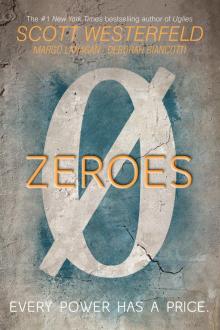 Zeroes
Zeroes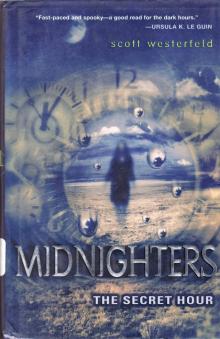 The Secret Hour
The Secret Hour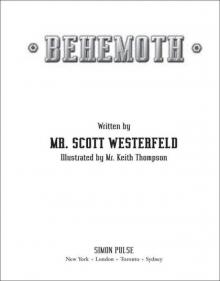 Behemoth
Behemoth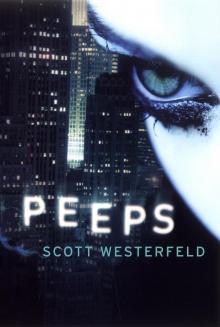 Peeps
Peeps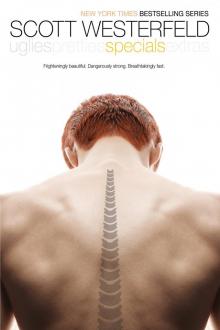 Specials
Specials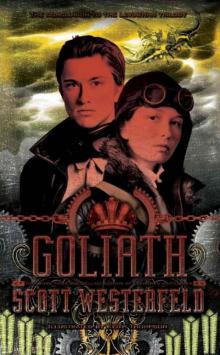 Goliath
Goliath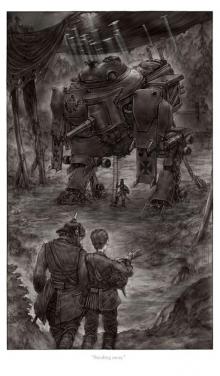 Leviathan
Leviathan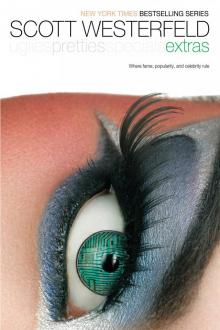 Extras
Extras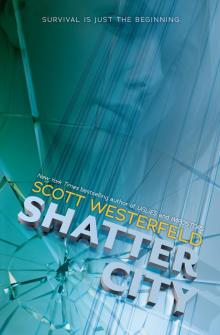 Shatter City
Shatter City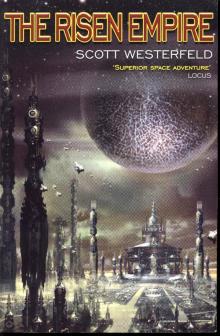 The Risen Empire
The Risen Empire Touching Darkness
Touching Darkness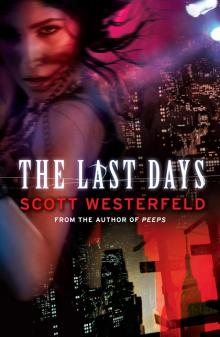 The Last Days
The Last Days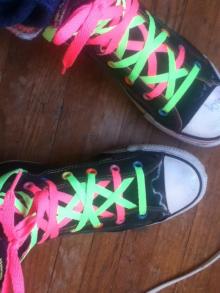 So Yesterday
So Yesterday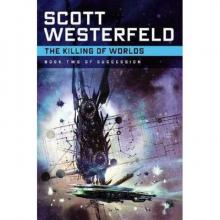 The Killing of Worlds
The Killing of Worlds Afterworlds
Afterworlds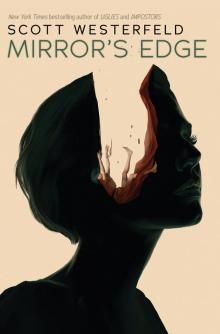 Mirror's Edge
Mirror's Edge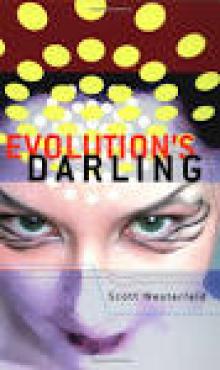 Evolution's Darling
Evolution's Darling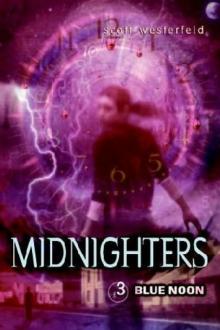 Blue Noon m-3
Blue Noon m-3 Touching Darkness m-2
Touching Darkness m-2 Impostors
Impostors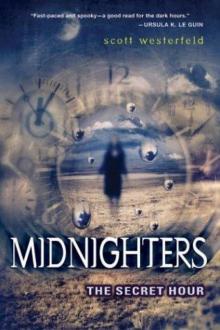 The Secret Hour m-1
The Secret Hour m-1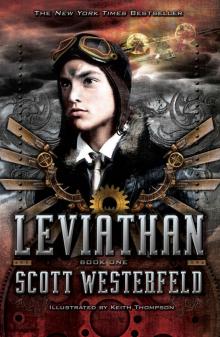 Leviathan 01 - Leviathan
Leviathan 01 - Leviathan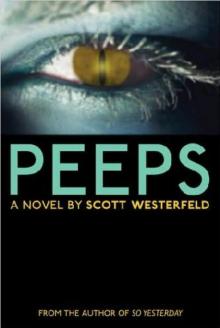 Peeps p-1
Peeps p-1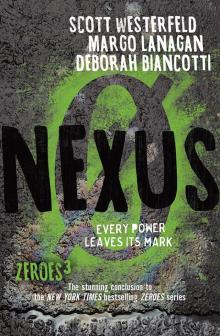 Nexus
Nexus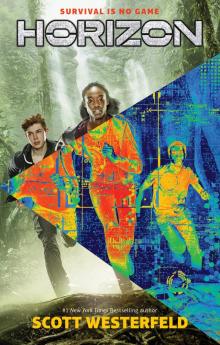 Horizon
Horizon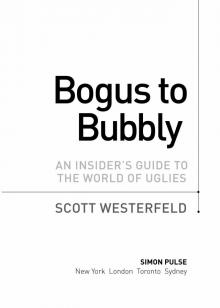 Bogus to Bubbly
Bogus to Bubbly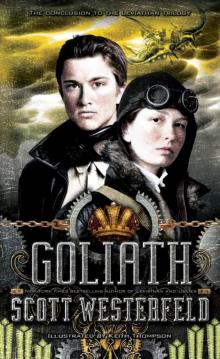 Goliath l-3
Goliath l-3 The Last Days p-2
The Last Days p-2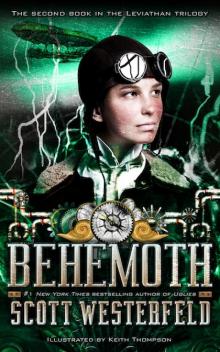 Behemoth l-2
Behemoth l-2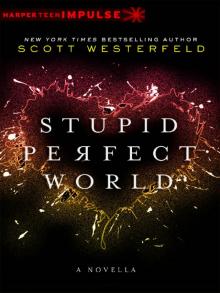 Stupid Perfect World
Stupid Perfect World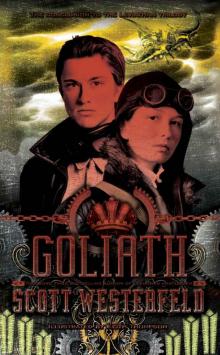 Goliath (Leviathan Trilogy)
Goliath (Leviathan Trilogy)